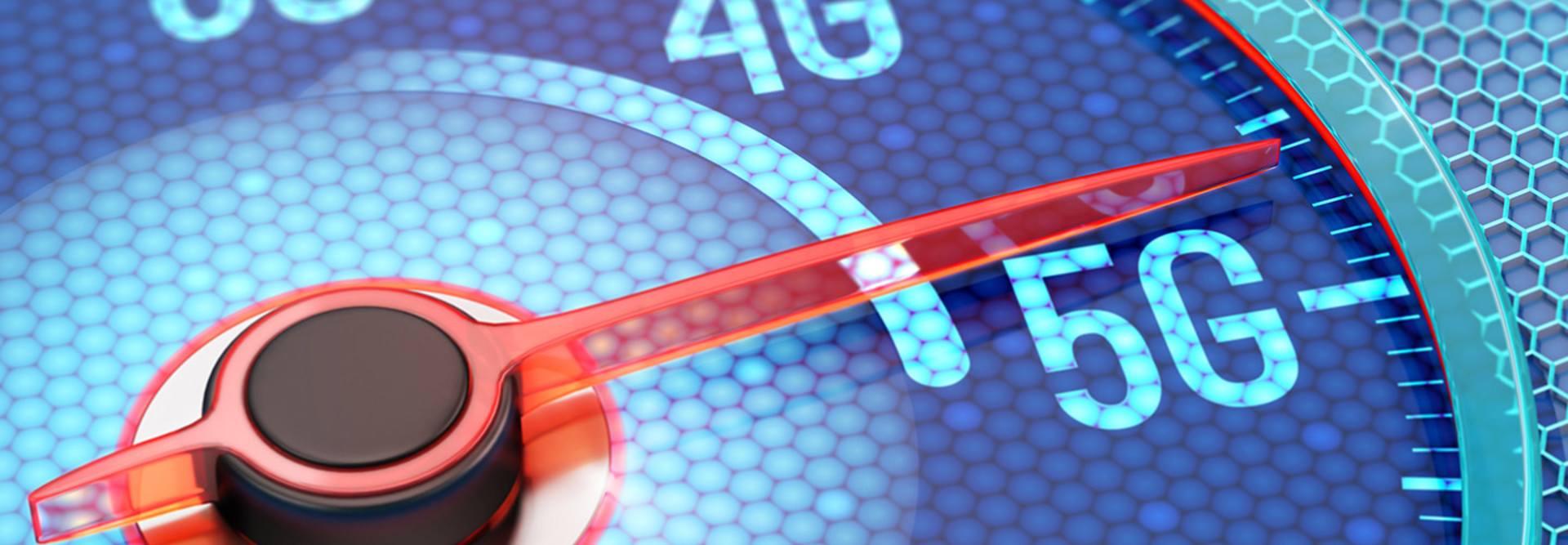5G Wireless Networks Are Coming, and the Business Market Is a Clear Target
Fifth-generation wireless networks are still not a reality, but as 5G cellular technology moves closer to trials and actual deployments, it is being eyed not just for consumers but as a new element of enterprises’ tech toolboxes.
The 5G networks promise speeds that are 100 times faster than current 4G LTE wireless networks and 10 times faster than superfast broadband connections. However, it is not just being touted as a faster network.
The technology will enable devices to connect to the Internet of Things, and 5G will take advantage of software-defined networking to be more flexible and agile. It will support very low latencies, meaning there will be much less delay between the time someone clicks a button in an application and when data is delivered over the network. That will potentially enable a new range of business use cases, including autonomous vehicles, virtual reality, drones and more.
The problem? There are currently no official standards for 5G networks, and wireless carriers are still testing the technology. It will probably be 2019 or 2020 before such networks start to get deployed on a wide-scale basis. Yet carriers and their network technology vendors are forging ahead with trials and working to develop apps and use cases.
As SDxCentral notes, last week in a company blog post, Andre Fuetsch, chief technology officer at AT&T, noted that AT&T will be able to “launch standards-based mobile 5G services to consumers starting as early as late 2018.” That’s largely because 3GPP, the standards-setting body for the wireless industry, accelerated the timetable for approving the non-standalone 5G New Radio (NR) specification to December 2017, instead of March 2018. That means, Fuetsch wrote, that by December, the wireless industry will get “the first complete picture of a holistic 5G system, enabling hardware, chipset, and device manufacturers to start their development earlier.”
Meanwhile, as FierceWireless reported: “Executives at rival Verizon, which is conducting precommercial fixed wireless trials in 11 markets, have said they expect to launch a commercial fixed broadband offering in 2018, but they see a mobile type of 5G service farther out, like the end of 2019 and possibly into 2020.”
New Use Cases Enabled by 5G
What will businesses be able to do with 5G networks that they can’t do now? Those use cases are still being developed, but they are starting to come into focus a bit more than they were last year. At the recent Mobile World Congress (MWC) trade show in Barcelona, wireless carriers and vendors demonstrated potential use cases.
Christian Hedelin, head of strategy for network vendor Ericsson’s network products unit, told IDG News Service at MWC that streaming 4K resolution video and replacing fiber broadband deployments are clear business use cases. Additionally, anyone involved in public safety will benefit thanks to the expected low latency. However, Ericsson is still working with academics and industries to determine 5G applications. “Most of the use cases are still in the making,” Hedelin said.
At MWC, Spanish carrier Telefónica and Ericsson demonstrated how a 5G network could let someone use a steering-wheel console to control a vehicle 43.5 miles away with almost no lag time. As IDG reported: “It feels realistic, with a total latency, or delay, of 30 milliseconds. If it weren’t for having to send the video over a 70 km fiber link to the show, the latency would only be 4 milliseconds, Telefónica says. So if a vehicle were remotely controlled over 5G alone, it would be even more responsive.”
Such controls could help companies with vehicle fleets, or those with vehicles at remote warehouses or manufacturing sites.
Eventually, 5G networks will be used to not only direct self-driving cars, but also link vehicles to connected infrastructure around them. “It’s not just about the cars,” Adam Koeppe, vice president of network planning for Verizon, told CNET at MWC. “It's about urban design and technology.”
Further, 5G could enable drones to stream back video footage much more quickly, which would be helpful to any company that is monitoring infrastructure, especially in the energy utilities markets.
Low latency will also enable virtual reality to pervade more applications, as lag times for delivering VR environments diminish.
Technical Hurdles to Overcome
There is still a long way to go before 5G networks are used by businesses on a regular basis. “5G is not ready yet,” T-Mobile US CTO Neville Ray said at MWC, according to IDG. “It’s maturing quickly, but it’s not real today, and I can’t go and deploy a 5G radio to serve my customers with and give them a handset.”
Verizon and Cisco Systems are partnering on the carrier’s precommercial pilots, with Cisco supplying networking gear, a virtualized packet core and virtual managed-services software. Yet widespread Verizon 5G service is still years away.
Networks will need to be upgraded to take advantage of software-defined networking and network-functions virtualization technology to truly take advantage of 5G, according to startup adviser and telecom veteran Saar Gillai. They will need to adopt such technologies to become more flexible and agile, with network hardware functions that can be turned into software.
“If you add in NFV [network functions virtualization], you create agility,” he told Silicon Angle. “It’s true that NFV is for virtualization, but it also creates agility and automation. Many of the networks, including 3GPP, are a decade old.”








